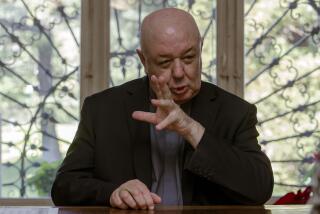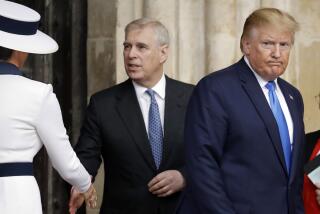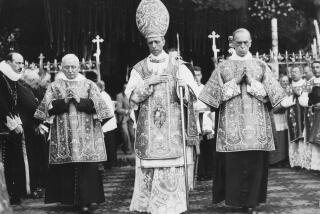Collection Offers a Glimpse Into Einstein’s Thoughts
- Share via
POUGHKEEPSIE, N.Y. — Inside a climate-controlled room at Vassar College’s main library, among neatly stacked rows of first-edition Jane Austens and George Eliots, rests a different but equally valuable and rare collection -- original Albert Einstein’s letters.
The physicist, who was named Time magazine’s Person of the 20th Century, was a prolific letter writer to his friends, discussing real-world events and politics, some of them ominous, such as the Nazis’ rise to power in the 1930s in Germany.
The collection, considered one of the largest and most diverse Einstein collections in the United States, is a gift from a Vassar alumna who befriended economist Otto Nathan, a fiercely protective friend of Einstein’s who briefly taught at Vassar and later became the executor of Einstein’s estate.
When Nathan died in 1987 at age 93, he left boxes of his possessions including hand-penned letters he received from Einstein, to his former Vassar student Adele Gabel Bergreen and her husband, Morris.
Last fall, Adele Bergreen donated more than 150 of Einstein’s original letters, inscribed books, manuscripts and photographs to her alma mater.
Now, Vassar is translating Einstein’s German writings in hopes of arranging them into an exhibition next year to coincide with the centennial of the publication of his theory of relativity.
Einstein was among history’s most creative minds and the preeminent theoretical physicist of his time, developing scientific theories and winning a Nobel Prize in 1921 for his explanation of the photoelectric effect. He spent his career at institutes in Europe and at Princeton, N.J., where he died in 1955.
The world’s most substantial Einstein collection is housed at Hebrew University in Jerusalem, where the physicist bequeathed all his papers. Additional Einstein artifacts abound in universities, libraries and personal collections worldwide.
Before he died, Einstein appointed Nathan and longtime secretary Helen Dukas co-trustees of his literary property.
The duo spent the rest of their lives organizing papers in Einstein’s Princeton home as well as accumulating and photocopying materials from all over the world for the archive in Jerusalem.
The bulk of Vassar’s acquisition has long been available to scholars in photocopy form at Hebrew University but the collection is noteworthy for its authenticity, said Diana Kormos-Buchwald, director of the Einstein Papers Project at Caltech.
The Vassar batch consists mainly of correspondence from Einstein to Nathan between 1934 and 1953. The two separately fled Nazi Germany with the rise of Adolf Hitler, and later became friends in the United States.
Two years before his death, Einstein wrote: “The bond between us has become even closer. It was always a miracle that we always understood each other with few words.”
The letters, some faded and worn at the edges, reflect Einstein’s musings on World War II, the Jewish plight in Europe and nuclear disarmament.
In a letter postmarked July 14, 1936, Einstein wrote to Nathan: “The developments in Europe are unspeakably horrible. The Lord God appears to have appointed the devil to be the chief clerk of it. The Fascist danger here also seems to be on the move.”
Two months later, Einstein wrote: “The only good thing appears to be that Hitler in the awareness of his power will commit enough stupidities to bring the whole world against him.”
Ronald Patkus, the associate director of Vassar’s special collections, said: “An important aspect of the collection is that we really see Einstein’s views on the social and political questions of the day.”
Adele Bergreen, a 1944 Vassar graduate, received a trove of Nathan’s belongings after he died, which she hurriedly donated to several academic institutions. The artifacts she kept -- estimated to be worth millions -- sat in a suitcase in her New York law office until she gave them to Vassar.
“There was so much of it,” she said. “We thought we should spread it around.”
The Vassar collection also contains carbon copies of Nathan’s letters to Einstein as well as letters by Einstein’s wife, Elsa, to Nathan. There’s also correspondence to Einstein from Austrian psychoanalyst Sigmund Freud and U.S. Supreme Court Justice Felix Frankfurter.
Besides the letters, there’s an anti-nuclear weapon petition that Einstein co-signed with former Vice President Henry Wallace in the 1950s, as well as several inscribed books by Einstein to Nathan and photographs of the two friends.
Caltech researchers are publishing Einstein’s complete personal letters and scientific manuscripts. The Einstein Papers Project plans 29 volumes; eight volumes have already been published by Princeton University Press.






